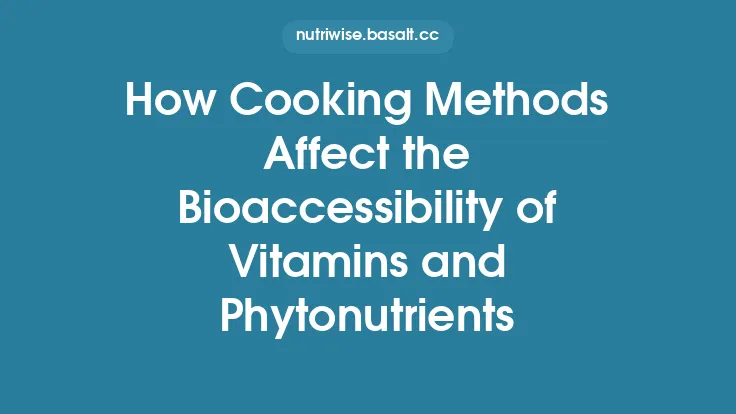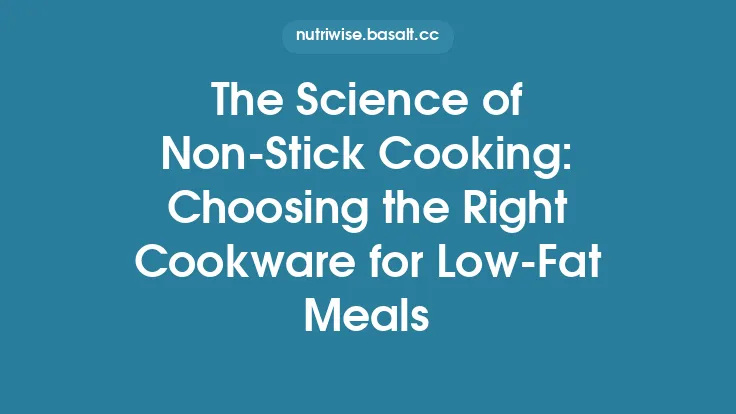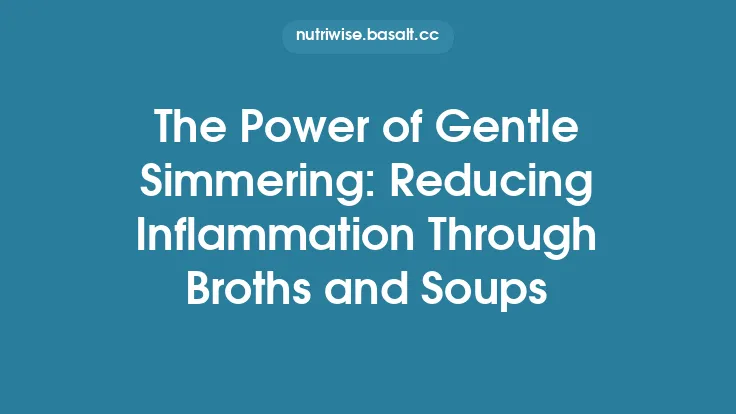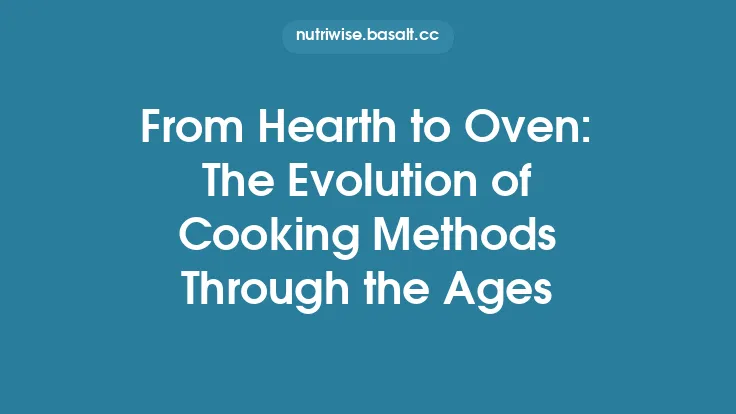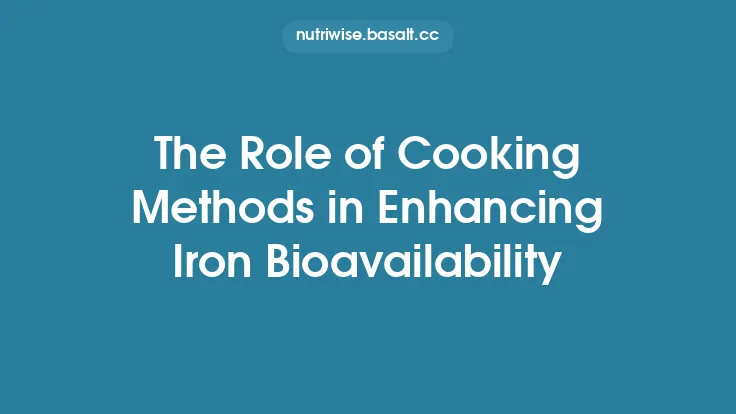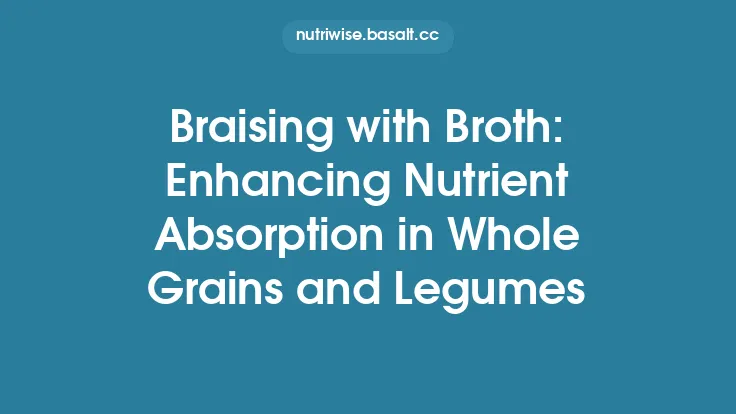Slow cooking invites us to step back from the frantic pace of modern life and let flavors unfold at their own rhythm. By committing to a low‑and‑slow approach, we create meals that are not only richly layered in taste but also provide a natural pause in the day—a moment to set a pot, attend to other tasks, and return to a simmering masterpiece. This method, rooted in centuries‑old traditions, aligns with contemporary health goals while offering a practical antidote to kitchen stress.
Understanding the Slow Cooking Philosophy
At its core, slow cooking is a culinary philosophy that values time as an ingredient. Unlike high‑heat techniques that rely on rapid Maillard reactions or flash searing, slow cooking leverages prolonged exposure to moderate temperatures (typically 80 °C–95 °C / 175 °F–203 °F). This gentle heat allows connective tissues in meat to break down into gelatin, starches to gelatinize fully, and aromatic compounds to meld gradually. The result is a dish where each component contributes to a harmonious whole, rather than competing for attention.
Key principles include:
- Patience over speed – Accepting that flavor development is a process that cannot be rushed.
- Simplicity of preparation – Minimal chopping, fewer steps, and reliance on whole ingredients.
- Consistency of temperature – Maintaining a stable heat environment to avoid over‑cooking or under‑cooking.
- Integration with daily routines – Using the cooking time to accomplish other tasks, thereby reducing the perception of “extra work” in the kitchen.
The Science Behind Low‑Temperature Cooking
Collagen Conversion
In tougher cuts of meat, collagen fibers dominate. When exposed to temperatures between 70 °C and 80 °C (158 °F–176 °F) for extended periods, collagen hydrolyzes into gelatin, imparting a silky mouthfeel and tender texture. This transformation is time‑dependent; a typical 2‑hour simmer may only partially convert collagen, whereas an 8‑hour low‑heat cook can achieve near‑complete gelatinization.
Starch Gelatinization
Root vegetables and legumes contain starch granules that swell and absorb water when heated above 60 °C (140 °F). Slow cooking ensures uniform gelatinization, preventing the gritty texture that can arise from rapid boiling. The gradual absorption also allows flavors from surrounding broth or sauce to penetrate the starch matrix, enhancing overall taste.
Flavor Extraction and Development
Aromatic compounds such as terpenes, phenols, and aldehydes are released slowly from herbs, spices, and aromatics. Prolonged simmering facilitates the diffusion of these molecules into the cooking medium, creating depth without the harshness that can result from high‑heat volatilization. Additionally, slow oxidation of lipids at moderate temperatures yields subtle nutty notes, enriching the flavor profile.
Choosing the Right Equipment
Traditional Crockpots vs. Modern Slow Cookers
- Crockpot (Ceramic/Stoneware) – Offers excellent heat retention and even distribution. Ideal for recipes requiring a gentle, consistent temperature over many hours.
- Electric Slow Cooker – Provides programmable temperature settings (low, medium, high) and timers. Some models include a “keep warm” function that maintains a safe serving temperature without further cooking.
- Dutch Oven (Cast Iron or Enamel) – Suitable for stovetop or oven‑based slow cooking. The heavy lid creates a sealed environment, and the material’s thermal mass ensures stable heat.
Sous‑Vide as an Extension of Slow Cooking
While not a classic slow cooker, sous‑vide devices maintain precise low temperatures (typically 55 °C–85 °C / 131 °F–185 °F) in a water bath. This method excels at preserving moisture and achieving uniform doneness, especially for proteins. It can be paired with a finishing sear to combine the benefits of slow cooking with a crisp exterior.
Selecting Materials
- Thermal Conductivity – Cast iron and enameled steel conduct heat evenly, reducing hot spots.
- Non‑Reactive Surfaces – Avoid aluminum or uncoated copper for acidic dishes, as they can impart metallic flavors.
- Lid Fit – A tight‑sealing lid minimizes evaporation, preserving moisture and concentrating flavors.
Key Techniques for Flavor Development
Layering Ingredients
Begin with aromatics (onion, garlic, celery) at the base, followed by proteins, then vegetables, and finally liquids. This order respects the varying cooking times of each component, ensuring that delicate items are not over‑cooked.
Deglazing and Building a Base
Before transferring ingredients to the slow cooker, sear meat or vegetables in a hot pan and deglaze with wine, broth, or vinegar. The resulting fond adds depth that would otherwise be lost in a low‑heat environment.
Balancing Acidity and Sweetness
Because slow cooking can mellow sharp flavors, introduce acidic elements (tomatoes, citrus juice, vinegar) toward the end of the cooking cycle to brighten the dish. Similarly, a touch of natural sweeteners (carrots, apples, honey) can counterbalance richness.
Controlling Moisture
If a recipe appears too watery, remove the lid for the final 30‑60 minutes to allow evaporation. Conversely, add a splash of broth or water if the dish is drying out. The key is to adjust gradually, tasting as you go.
Health Benefits of Slow Cooking
Nutrient Retention
Water‑soluble vitamins (B‑complex, vitamin C) are sensitive to high temperatures and prolonged exposure to air. Slow cooking at lower temperatures reduces the degradation of these nutrients compared to boiling or frying.
Reduced Need for Added Fats
The extended cooking time breaks down connective tissue and releases natural fats, often eliminating the need for additional oil or butter. This can lower overall caloric density while preserving satiety.
Enhanced Digestibility
Gelatin formed from collagen is easier for the digestive system to process, supporting gut health. Additionally, the breakdown of complex carbohydrates into simpler sugars during slow cooking can aid in nutrient absorption.
Lower Glycemic Impact
When legumes and whole grains are cooked slowly, their starches gelatinize more uniformly, leading to a slower release of glucose into the bloodstream. This can be beneficial for blood‑sugar management.
Planning and Scheduling for a Stress‑Free Experience
Batch Preparation
Allocate a dedicated block (e.g., weekend afternoon) to chop vegetables, portion proteins, and assemble sauces. Store pre‑measured components in airtight containers, ready to drop into the cooker during the week.
Timing Strategies
- Overnight Cooking – Set the slow cooker on “low” before bedtime for dishes that will be ready by breakfast.
- Workday Cooking – Start the cooker in the morning; a 6‑hour “low” cycle aligns with a typical workday, delivering dinner upon return.
- Weekend Feasts – Use the “high” setting for shorter, intensive cooking sessions when you have more time to monitor the process.
Integration with Smart Home Devices
Many modern slow cookers connect to Wi‑Fi, allowing remote temperature adjustments via smartphone apps. This feature enables you to fine‑tune cooking without being physically present, further reducing kitchen pressure.
Safety and Food Safety Considerations
Temperature Monitoring
The USDA recommends that slow‑cooked foods reach an internal temperature of at least 74 °C (165 °F) to eliminate pathogenic bacteria. Use a calibrated food‑grade thermometer to verify doneness, especially for poultry and pork.
Avoiding the “Danger Zone”
If a slow cooker does not reach a safe temperature within the first hour, consider pre‑heating the pot on the stovetop or using a pressure‑cooking step to jump‑start the process.
Proper Storage
Cool leftovers rapidly (within two hours) and refrigerate in shallow containers. Reheat to a rolling boil or an internal temperature of 74 °C (165 °F) before serving.
Lid Integrity
A cracked or warped lid can allow steam to escape, lowering the cooking temperature and extending the time needed to reach safe internal temperatures. Inspect lids regularly and replace as needed.
Recipe Development and Ingredient Pairings
Building a Flavor Profile
- Base – Choose a broth (vegetable, chicken, beef) or a tomato‑based sauce as the foundation.
- Aromatics – Combine onions, garlic, leeks, or shallots for depth.
- Herbs & Spices – Add bay leaves, thyme, rosemary, or cumin early; introduce fresh herbs (parsley, cilantro) near the end for brightness.
- Acidic Elements – Incorporate wine, balsamic vinegar, or citrus zest to balance richness.
Protein Pairings
- Tough Cuts – Chuck roast, pork shoulder, lamb shank, and brisket thrive in low‑heat environments.
- Legumes – Dried beans, lentils, and chickpeas become tender without pre‑soaking when cooked slowly.
- Root Vegetables – Carrots, parsnips, turnips, and sweet potatoes develop a caramelized sweetness.
Example Recipe Framework
*Slow‑Cooked Moroccan Lamb Stew*
- Ingredients: Lamb shoulder cubes, onion, garlic, carrots, chickpeas, diced tomatoes, low‑sodium chicken broth, ras el hanout, cinnamon stick, preserved lemon, dried apricots, fresh cilantro.
- Method: Sear lamb and aromatics in a skillet, deglaze with a splash of dry white wine, transfer to slow cooker, add remaining ingredients, cook on low for 8 hours, finish with a drizzle of olive oil and a sprinkle of cilantro.
This structure showcases how spices, sweet dried fruit, and a touch of acidity can be balanced over time to produce a complex, comforting dish.
Integrating Slow Cooking into Daily Life
Meal Planning Synergy
Combine slow‑cooked dishes with quick side components (e.g., a fresh salad, steamed greens, or whole‑grain couscous) to create balanced meals without extending overall preparation time.
Portion Control
Because slow cooking yields generous quantities, portion the finished dish into individual containers for the week. This reduces decision fatigue and encourages consistent, home‑cooked meals.
Seasonal Adaptation
Adjust the core ingredients to reflect seasonal produce. In summer, incorporate zucchini, corn, and fresh herbs; in winter, lean on root vegetables, squashes, and hearty greens. The slow cooking method remains constant, while the flavor palette evolves with the seasons.
Community and Sharing
Invite friends or family to contribute a component (e.g., a homemade spice blend or a unique vegetable) to a communal slow‑cooked pot. This collaborative approach fosters connection without adding personal workload.
Troubleshooting Common Issues
| Issue | Likely Cause | Remedy |
|---|---|---|
| Dry, stringy meat | Temperature too high or cooking time too long | Reduce heat to “low,” shorten cooking time, add extra liquid, or finish with a splash of broth. |
| Overly watery broth | Excess liquid or insufficient evaporation | Remove lid for the final 30‑45 minutes, or stir in a thickening agent (e.g., a slurry of cornstarch and cold water). |
| Lack of depth in flavor | Skipping searing or deglazing steps | Sear proteins and aromatics before slow cooking; deglaze pan to capture fond. |
| Undercooked beans | Insufficient cooking time or old beans | Extend cooking time, or pre‑soak beans for 4‑6 hours to reduce cooking duration. |
| Burnt edges | Food stuck to the bottom of the pot | Stir occasionally, ensure enough liquid, and use a heavy‑bottomed pot to distribute heat evenly. |
Conclusion: Embracing the Slow Cooking Lifestyle
The practice of slow cooking transcends mere technique; it offers a structured yet flexible framework for nurturing both body and mind. By allowing time to become an ally rather than an adversary, we unlock flavors that are richer, textures that are more satisfying, and a kitchen rhythm that aligns with a calmer, more intentional way of living. Whether you are a seasoned home chef or just beginning to explore low‑heat methods, integrating slow cooking into your routine can serve as a reliable cornerstone for healthful, stress‑reduced meals that stand the test of time.
